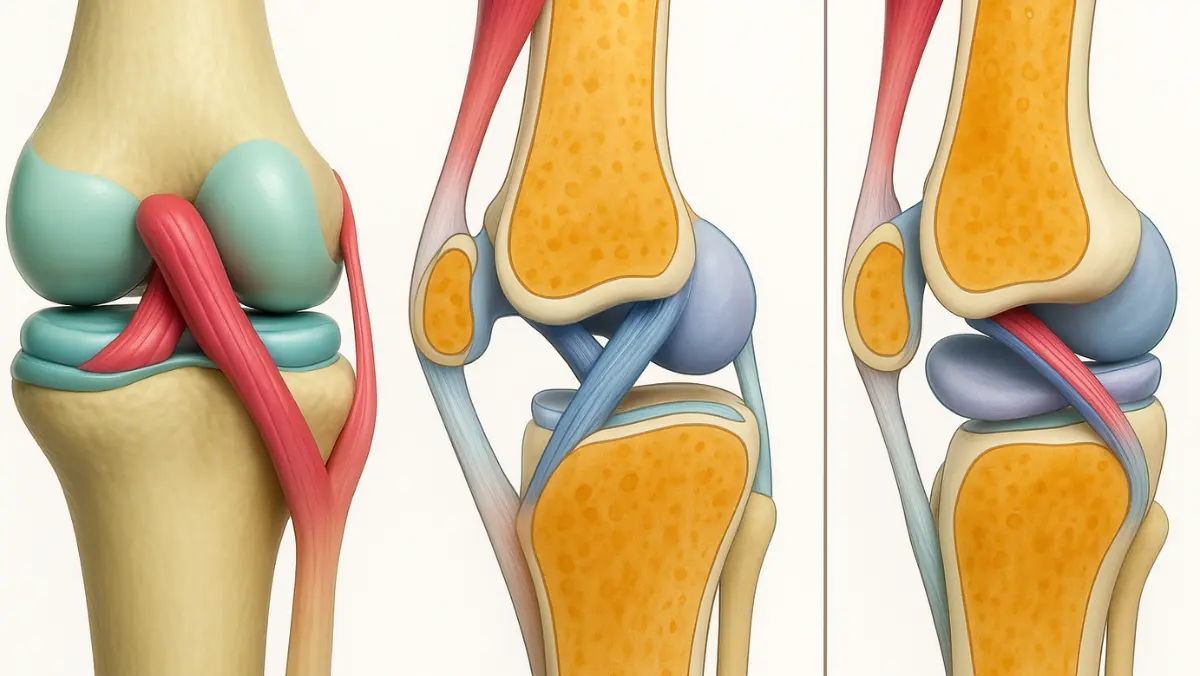
Safety Rate
The Posterior Cruciate Ligament (PCL) is one of the major stabilizing ligaments of the knee. It prevents the tibia (shin bone) from moving backward relative to the femur (thigh bone) and plays a critical role in maintaining joint stability during movement. Although PCL injuries are less common than ACL injuries, they can cause significant instability, pain, and long-term damage if left untreated.
For severe or complete PCL tears, arthroscopic PCL reconstruction is a highly effective surgical solution. This minimally invasive technique replaces the damaged ligament with a graft, restoring stability, protecting joint health, and allowing patients to return to an active lifestyle.
Arthroscopic PCL reconstruction is a keyhole surgical procedure that uses small incisions and a camera-assisted system (arthroscope) to rebuild the torn ligament. A graft, either from the patient (autograft) or a donor (allograft), is positioned in the anatomical location of the original ligament and fixed securely with screws or anchors. The goal is to restore normal knee biomechanics with less tissue disruption than open surgery.
This procedure is typically recommended when:
Recovery is gradual and requires a structured physiotherapy program:
While generally safe, risks include infection, stiffness, graft failure, or blood clots. Success depends on surgical expertise, the quality of the graft, and strict adherence to the rehabilitation plan.
Arthroscopic PCL reconstruction is a modern, minimally invasive technique that restores stability and function in patients with severe PCL injuries. With precise surgical repair and a tailored rehabilitation program, most patients can return to active lifestyles while protecting their knees from future complications.
PCL reconstruction surgery is a procedure to repair or replace a torn posterior cruciate ligament in the knee. The surgery restores stability by using a graft from the patient’s own tissue or a donor to replace the damaged ligament. This procedure is highly effective in reducing pain, preventing long-term joint damage, and improving mobility. With proper post-operative care and physiotherapy, most patients regain knee strength, flexibility, and confidence to return to sports and daily activities safely.
Yes, modern PCL surgery is often performed arthroscopically, using small incisions and a camera for precision. Arthroscopic PCL reconstruction minimizes tissue trauma, reduces post-operative pain, and accelerates recovery compared to traditional open surgery. Specialized instruments allow the surgeon to accurately place the graft and restore ligament function. Patients experience less scarring, faster mobility, and improved knee stability. When combined with structured rehabilitation, arthroscopic surgery offers highly positive outcomes, allowing a safe return to normal activities and sports.
The recovery time for PCL reconstruction surgery usually ranges from 6 to 9 months, depending on injury severity and rehabilitation adherence. Initially, patients use crutches and limit weight-bearing to protect the graft. Gradual physiotherapy restores range of motion, strength, and stability. Most individuals regain daily functional abilities within a few months, while full return to sports or high-impact activities occurs later. Consistent post-operative care ensures optimal results, with most patients achieving pain-free knee movement and long-term stability.
Take the first step towards pain-free living. Book your consultation today and discover personalized treatment options tailored to your needs.